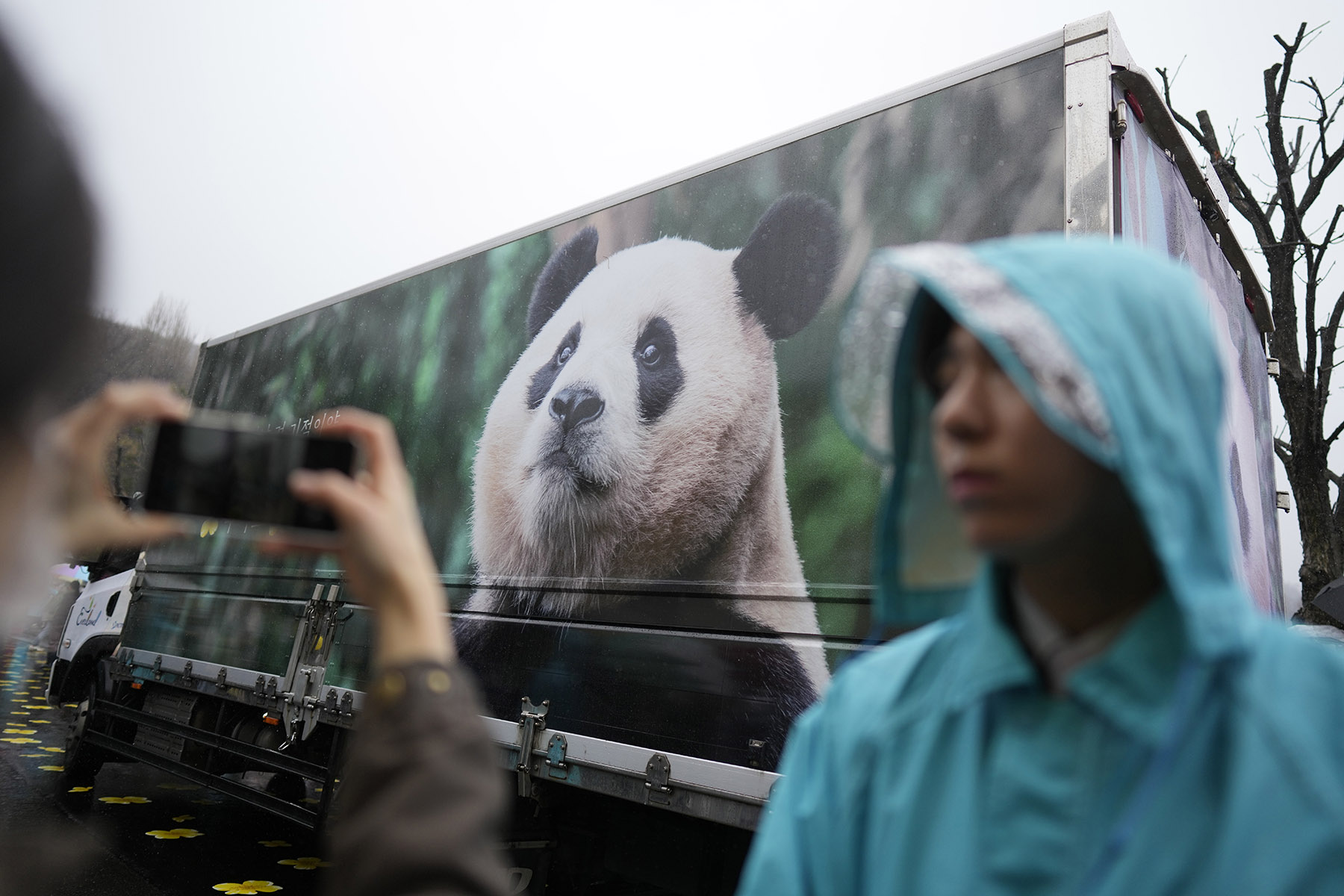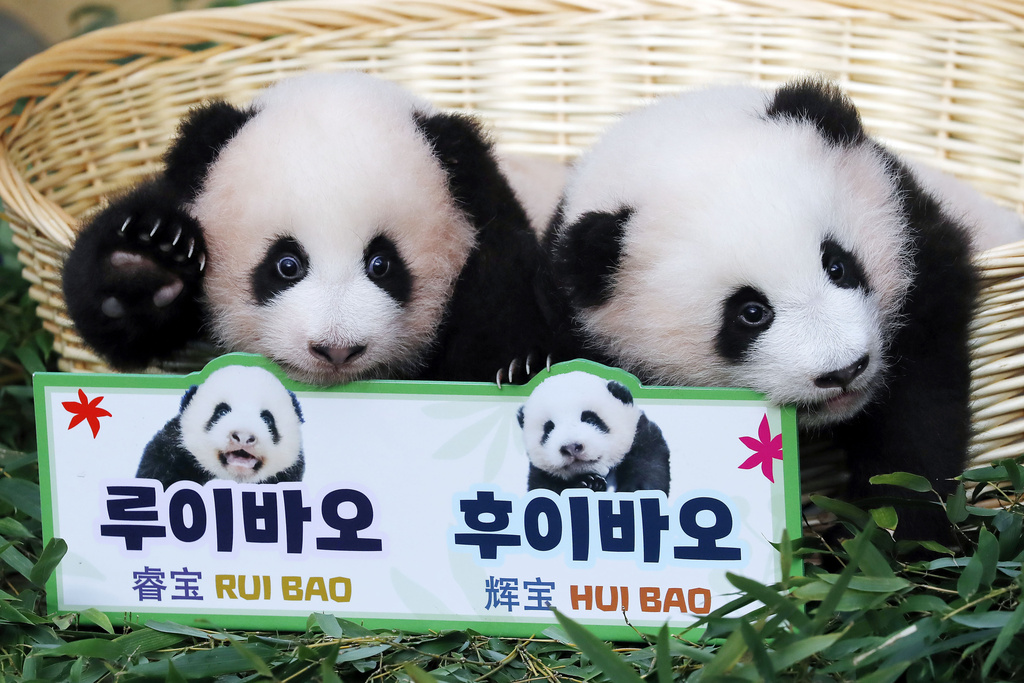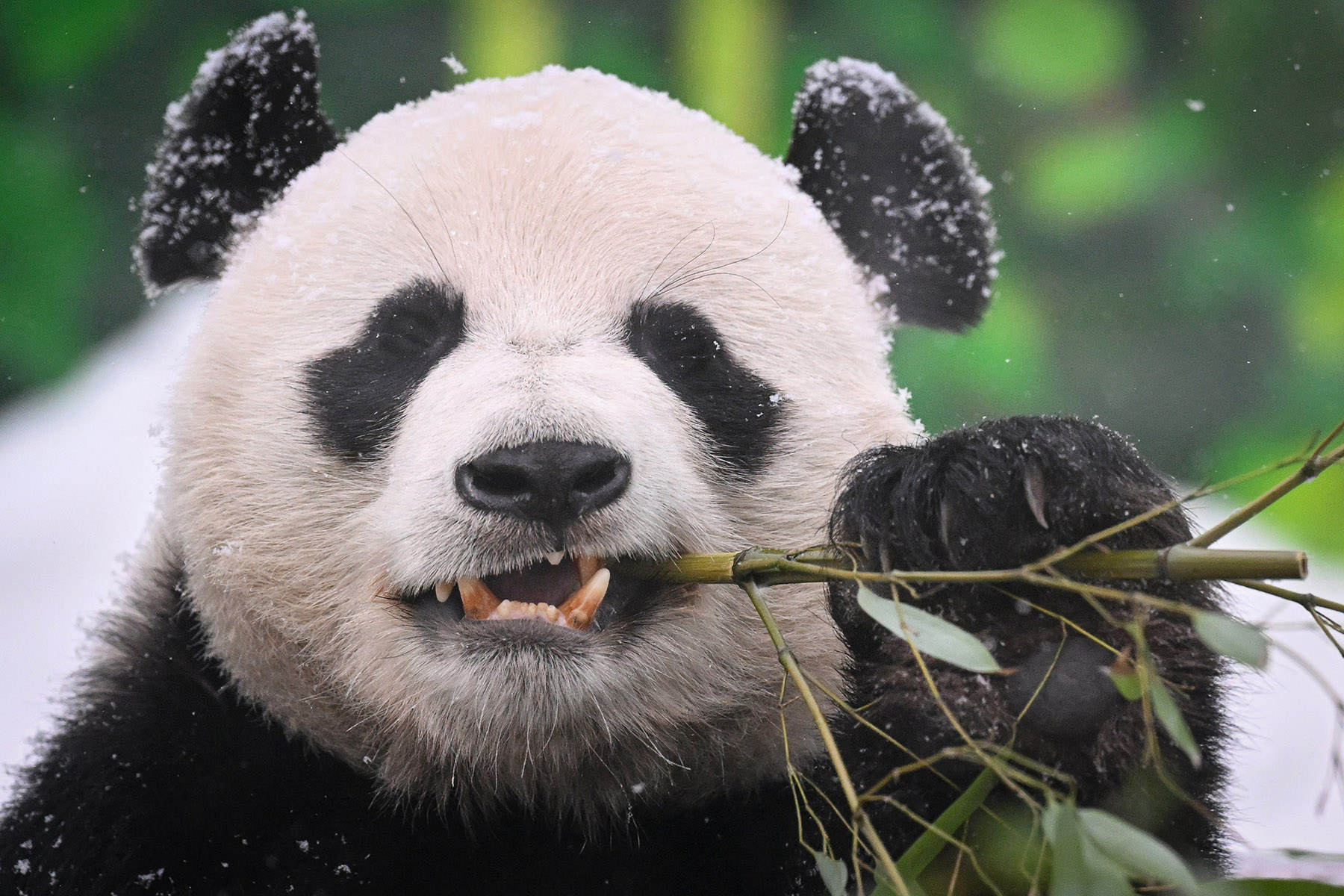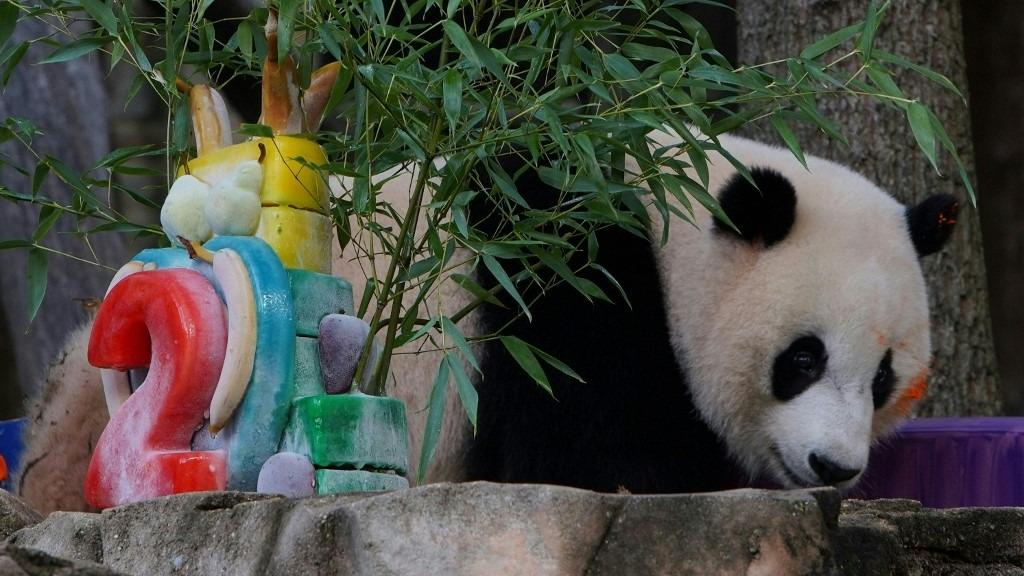For over 50 years, the lovable bears have won friends, enhanced image of country

During a visit to Adelaide Zoo on his recent official visit to Australia, Premier Li Qiang announced that China would loan a new pair of giant pandas to the country to continue cooperative research on conservation of the globally loved animal.
Adelaide Zoo has been home to giant pandas Wang Wang and Fu Ni since 2009, when they were relocated to South Australia from Wolong National Nature Reserve in Southwest China's Sichuan province.
The ursine pair were lent for a period of 10 years, which was extended by five years in 2019 with the help of funding from the South Australian government. The extension of the loan is due to expire at the end of this year.
Australian Foreign Minister Penny Wong said the new pandas would remain the star attraction of the zoo, the only one in the Southern Hemisphere that has giant pandas.
READ MORE: Two Chinese giant pandas arrive in US first time in two decades
"It's good for the economy, it's good for South Australian jobs, it's good for tourism, and it is a signal of goodwill, and we thank you," Wong was quoted as saying by The Associated Press.
Zhang Tengjun, deputy director of the Department for American Studies at the China Institute of International Studies, said, "Panda diplomacy reflects Beijing's continued commitment to boosting grassroots friendship between China and other nations through giant pandas."
As a symbol of China's benevolence, Zhang said giant pandas also convey the country's commitment to peaceful development, and reduce unnecessary suspicion and misunderstanding.
Since its founding in 1949, New China has used panda diplomacy to shore up relations through gifting or lending pandas to foreign zoos to act as goodwill ambassadors. For the recipients, the move is widely considered a gesture of friendship, trust, and respect.

Paws in relations
In 1957, giant panda Ping Ping was gifted to the former Soviet Union to celebrate the 40th anniversary of the 1917 October Revolution, marking the commencement of panda diplomacy.
Following former United States President Richard Nixon's icebreaking visit to China in 1972 to mend the divide between the two countries, Ling Ling and Hsing Hsing arrived at Washington National Zoo in April of that year as a gift from the Chinese government. They were the first giant pandas sent to the US.
"It was no joke, however, that even those in high levels of government were unprepared for the pandas' popularity," according to the Richard Nixon Foundation.
"Hundreds of people visited every day, standing several rows deep to catch glimpses of Ling Ling and Hsing Hsing, top attractions at the zoo until their deaths in the 1990s."
Later in 1972, the panda pair of Kang Kang and Lan Lan arrived at Ueno Zoo in Tokyo, delivered as a gift to commemorate the normalization of diplomatic relations between China and Japan.
The Japan News reported that the number of visitors to the zoo, usually between 3 million and 4 million annually, exceeded 7 million in the fiscal year 1973. When a new panda arrived or a cub was born in Japan, related merchandise flew off the shelves.
The Democratic People's Republic of Korea, the United Kingdom, France, Germany, Spain and Mexico also received pandas as gifts from the Chinese government.
However, in the 1980s, China stopped sending pandas abroad as gifts due to their dwindling numbers.
The endangered animals could only be lent, often in pairs for 10-year periods, for breeding and biological research cooperation with foreign countries. All cubs born abroad belong to China.
In October 2022, Qatar became the first country in the Middle East to receive Chinese giant pandas when a pair arrived in the capital Doha to mark the hosting of the FIFA World Cup. Female Si Hai and male Jing Jing are due to stay in Qatar for 15 years under a giant panda conservation and research cooperation project.
"The arrival of two pandas added to the festive atmosphere of the World Cup. These have become a new name card for the friendship between Qatar and China," said Qatari Emir Sheikh Tamim bin Hamad Al Thani in Riyadh when meeting with visiting President Xi Jinping in December 2022.

Creature comforts
The Qatari government has built a hall for the giant pandas so that they can enjoy air conditioning and sleep in separate quarters. Facilities for medical treatment, food preparation, bamboo preservation and safety monitoring are also in place.
Caretakers look after the pandas around the clock and communicate with them in Mandarin and English. Staff members are also learning the Sichuan dialect to make the pandas "feel at home".
While keeping pandas can be costly for zoos, they are seen as drawcards for visitors and help generate income.
Also, China has strict standards when it comes to selecting foreign zoos for giant panda cooperation projects.
Si Ping, deputy secretary-general of the China Wildlife Conservation Association, said potential partners must have a good reputation and a strong desire for collaboration.
They should have complete facilities, sufficient food sources, a professional feeding and management team, a high-level scientific research team, and the capability for sustainable development, she said.
Only institutions that meet these requirements can be considered for potential cooperation partners, she added.

Emotional connection
Zhang from the CIIS said giant pandas have become an important window for foreigners to better understand China, and enhance their perceptions of it as a friendly country.
"When official exchanges are not always so smooth, panda diplomacy plays a crucial role in continuing cultural interactions between China and other nations," he said.
In San Francisco last November, President Xi announced that China is ready to continue its cooperation with the US on panda conservation to deepen the friendly ties between the people of both countries.
In May, US first lady Jill Biden and the National Zoo in Washington jointly announced that the zoo will be home to two new giant pandas, Bao Li and Qing Bao, by the end of this year. The zoo sent its three pandas back to China in November.
"We can't wait to celebrate this historic moment here in our nation's capital," said the US first lady in an official video released by the zoo.
The US Ambassador to China Nicholas Burns on social media welcomed the pandas being sent to Washington, describing them as "iconic symbols of US-China relations since President Nixon's visit a half century ago."
At the zoo's media event on May 29, Chinese Ambassador to the United States Xie Feng encouraged everyone to care for China-US relations in the same way they care for pandas, and jointly usher in a peaceful and prosperous future.
Chee Meng Tan, an assistant professor at the University of Nottingham Malaysia, said in a commentary that, "Beijing's redeployment of pandas dials up the diplomatic goodwill several notches, signaling Beijing's seriousness in improving links with Washington".
On Thursday, giant pandas Yun Chuan and Xin Bao arrived at the San Diego Zoo in California to start a 10-year international giant panda conservation cooperation.
San Francisco Mayor London Breed visited the Shanghai Wildlife Park in April to observe how panda habitats are set up and run. "Pandas represent a form of diplomacy and pure, fun, excitement and joy," Breed said during the visit.

Coming home
Xiang Xiang, born in June 2017 at the Ueno Zoo in Tokyo, returned to China last year.
Distance has not diminished Japanese people's affection for the celebrity panda, and many have traveled to China to see the female panda in her shelter in Ya'an, Sichuan.
Nearly 200 giant panda lovers in Tokyo celebrated Xiang Xiang's seventh birthday in June.
At the gathering, Toshimitsu Doi, president of the Panda Protection Institute of Japan, said he hoped more Japanese people would come to love giant pandas and travel to China, the home of the animals, to enhance their understanding of the country.
More than 10 giant pandas, including Fu Bao, are due to return to China this year, according to the China Wildlife Conservation Association.
Fu Bao was born at the Everland Park in Republic of Korea in July 2020 to two giant pandas moved to the country in 2016. The panda returned to Chengdu, Sichuan province, on April 3.
Fu Bao's videos enjoyed massive popularity on Everland Park's You-Tube channel, attracting around 500 million views. Everland said approximately 5.5 million people had visited the park just to see Fu Bao.
Speaking at Fu Bao's farewell event, Chinese Ambassador to the Republic of Korea, Xing Haiming, thanked Fu Bao's keeper Kang Cheol-won, saying Kang's love and care for the panda family were a reflection of the fraternity between the two countries.
China has launched a multimedia platform iPanda, which highlights the breeding and conservation projects of giant pandas and other rare wildlife species.
Panda lovers around the world are able to watch live panda broadcasts on the YouTube channels of the China Conservation and Research Centre for the Giant Panda and the Chengdu Research Base of Giant Panda Breeding.

Powerful symbol
A flagship species of wildlife conservation, the giant panda has also played an important role in advancing protection of biodiversity.
As the rarest member of the bear family and one of the world's most vulnerable animals, the giant panda has long drawn global attention to at-risk and endangered species.
Since its founding in 1961, the World Wide Fund for Nature has used the giant panda on its logo, with the iconic image serving as a rallying symbol for the global conservation movement.
In 2021, China officially designated its first group of national parks, including the Giant Panda National Park with a total area covering more than 22,000 square kilometers.
The move marks an important step forward in China's efforts to promote ecological protection and facilitate harmonious coexistence between humans and nature.
According to the National Forestry and Grassland Administration, China is carrying out panda conservation research with 18 overseas institutions from 17 countries, and there are over 50 giant pandas living abroad.
Both Chinese and foreign parties have jointly tackled a series of technical challenges in the areas of giant panda conservation, breeding, disease prevention and control, and reintroduction to the wild, significantly enhancing the scientific research of giant panda conservation.

Excitement builds
Phil Ainsley, the director of Adelaide Zoo, has shared his excitement about the two new pandas coming to his zoo in a video interview with reporters, saying the move allows him and his colleagues to continue to conserve and learn about the "amazing species".
"The conservation messages is really important," he said, adding collaborative programs between the two countries not only help the giant panda, but also other species that will benefit from the restoration and protection of environments.
Ainsley said ongoing learning about giant pandas is equally important, as it will help secure their future.
ALSO READ: New pair of giant pandas to further bolster Sino-Australian ties
Chinese and foreign experts are collaborating to promote the breeding of more giant pandas. China and the US have jointly bred 17 panda cubs in the US who survived to adulthood.
China and Spain have bred six giant panda cubs, making Spain the most successful country in Europe for breeding cooperation.
In 2021, China announced pandas had been downgraded from endangered to vulnerable, saying the classification upgrade reflected the animals' improved living conditions and the country's efforts to integrate their habitats.
Thanks to the ongoing giant panda conservation efforts, the number of wild pandas in China has grown to nearly 1,900.


